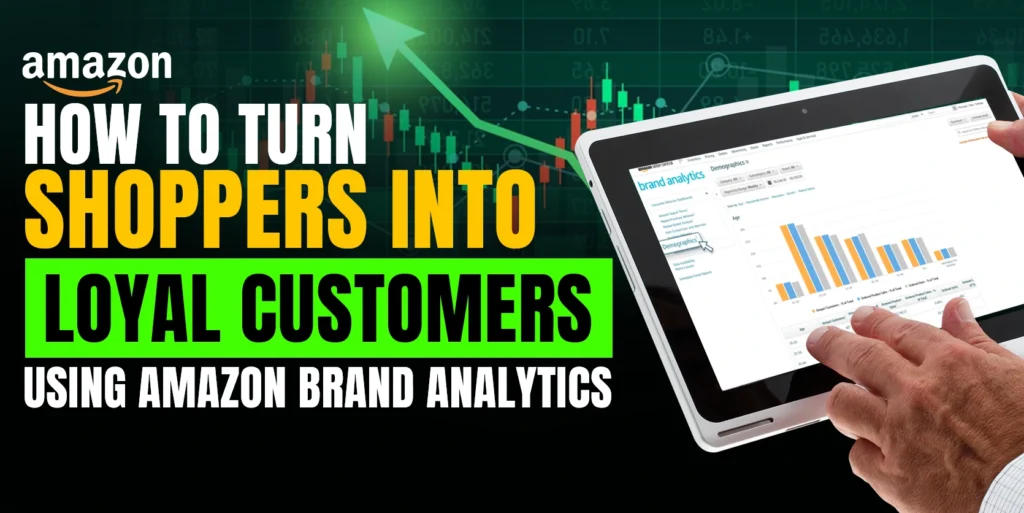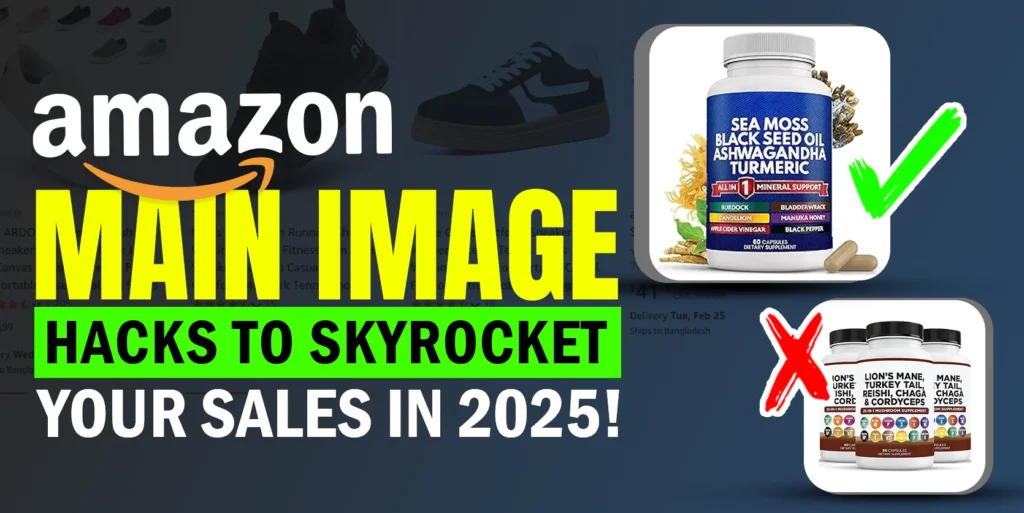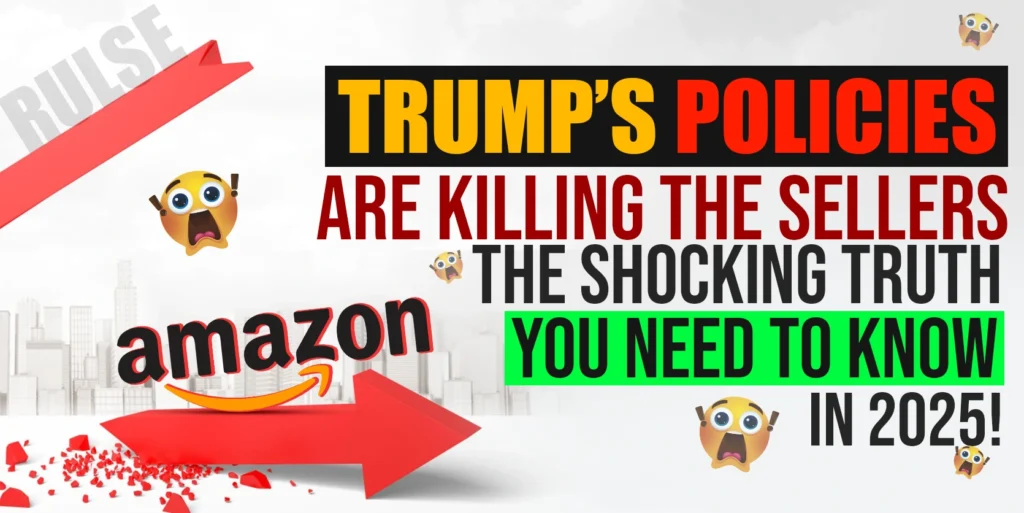Amazon has been known to offer competitive prices on a wide range of products, often undercutting its competitors. Amazon’s pricing algorithm is constantly updated in real-time, which means that prices can change rapidly. This can be both an opportunity and a challenge.
As a seller, you need to be aware of the market prices of your products and adjust your pricing accordingly to remain competitive.
In this article, we will explore different pricing methods that can help you stand out from the crowd and maximize your profits on Amazon.
A quick peek into the article:
- Definition of Amazon’s pricing strategy
- Why Do You Need a Pricing Strategy?
- The importance of pricing strategy
- Amazon’s pricing model
- Pricing tactics on Amazon
- How to calculate the best price for the product?
- Amazon pricing tools
- Different Types of Amazon Pricing
- Amazon Pricing Strategies to build your brand
- Some Crucial pricing tips that you can follow
What is Amazon’s Pricing Strategy?
Amazon’s pricing strategy is data-driven and focuses on offering competitive prices for a wide range of products. This allows sellers to adjust prices quickly in response to market conditions. However, it’s important to monitor prices to avoid losing out to competitors.
Having a pricing strategy is crucial for Amazon sellers to avoid pricing products too high or too low, resulting in low sales or no profit. Taking the time to determine the best pricing strategy for your audience is essential for success.
Why Do You Need a Pricing Strategy?
A clear pricing strategy is necessary for sellers to avoid losing out to competitors or undervaluing their products. Pricing strategy helps to establish the perceived value of products, where low prices may give the impression of lower quality and high prices may price the seller out of the market.
Also, it allows you to stay competitive in a constantly changing market. By monitoring market conditions and adjusting your prices accordingly, you can stay ahead of the competition and maintain your market position.
Finally, a pricing strategy can help you to optimize your profits by taking into account factors such as production costs, profit margins, and sales volume. By setting prices that are aligned with your business goals and financial objectives, you can ensure that you are making a profit on each sale and maximizing your overall revenue.
Why is proper pricing on Amazon so important?
Proper pricing on Amazon is essential for attracting customers, increasing sales volume, maximizing profits, and maintaining your position in a competitive marketplace. By setting the right prices and using a pricing strategy that aligns with your business goals, you can succeed as a seller on Amazon.
- Stay Competitive with Amazon’s Pricing Model:
Amazon’s pricing model is designed to favor the most competitive prices. Competitive pricing is crucial for Amazon sellers as the platform favors lower prices. If your prices are higher than your competitors, you may lose the Buy Box, where most sales occur. Monitor your competitors’ prices using Amazon’s tools and third-party software to stay ahead, but make sure to consider your profit margins and brand value before lowering your prices. Remember, customers value the best value, not just the cheapest option.
- Attract More Customers with Competitive Prices:
When customers shop, they want the best price possible. To attract more customers, offer competitive prices. But don’t forget that your product’s value is important too. If you’re selling a high-quality product, you can charge a higher price and still attract customers who appreciate quality.
- Generate More Revenue with a Successful Pricing Strategy:
With successful Amazon pricing strategy, can help you increase your revenue and reinvest in your business. To create a strategy that boosts sales, consider using dynamic pricing to adjust prices in real-time, experimenting with pricing strategies such as bundle pricing and volume discounts, and offering free shipping or using Amazon’s FBA program to attract more customers.
What is Amazon’s pricing model?
Amazon’s pricing model aims to provide competitive prices to customers, helping to build brand loyalty. This strategy can be profitable for sellers who offer lower prices to attract more customers and build a loyal base.
Amazon uses complex algorithms to analyze data from a variety of sources and adjust prices accordingly. This means that prices can change rapidly in response to market conditions, making it crucial for sellers to stay on top of pricing trends and adjust their prices accordingly.
What are Amazon’s pricing tactics?
If you’re looking to boost your business bottom line, employing a well-crafted pricing tactic can be a game-changer. A pricing tactic is a specific strategy that businesses use to manipulate the price of their products to achieve a particular objective.
One popular pricing tactic is competition-based pricing. This involves pricing your products based on what your competitors are charging. By keeping a close eye on your competitors’ pricing, you can ensure that your prices are competitive and attractive to potential customers.
Another common pricing tactic is cost-plus pricing. With this tactic, businesses set their prices based on the cost of goods plus markups.
Value-based pricing is another popular tactic, especially among luxury brands. This strategy involves setting prices based on the perceived value of the product.
The pricing tactic you choose will depend on your business goals and objectives, so it’s crucial to carefully consider your options to maximize profits and grow your business.
How to calculate the best price for the product?
To ensure profitability on Amazon, it’s important to calculate your cost of goods, add in marketing and sales expenses, and determine your desired profit margin to arrive at your ideal price point. By doing so, you can set prices that cover your costs and generate a profit, while remaining competitive in the marketplace.
Here’s the following formula that can help you to find the right pricing for your product:
It’s important to consider other factors like competition, target market, and overall value proposition. Just make sure your pricing is consistent across all products and competitive with your competitors. By taking a strategic approach to price, you can ensure your business is profitable in the long run.
Amazon pricing tools that can help you to estimate your Amazon sales margin:
Amazon provides a range of tools that can help online sellers determine the best price for their products. These tools enable sellers to make informed pricing decisions, optimize their pricing strategy, and increase sales and revenue. By taking advantage of these powerful tools, sellers can stay competitive and attract more buyers to their products.
- Amazon pricing calculator: The Amazon Pricing Calculator is a valuable tool for Amazon sellers. By inputting the cost of your product, category, and expected sales price, the tool calculates find the optimal price that maximizes your profits while factoring in shipping fees and Amazon fees. It generates a detailed report that shows profit margins at different price points, allowing you to test different pricing strategies to find the most profitable one.
- Amazon Automated Pricing: Automate Pricing is a tool on Amazon that enables sellers to automatically adjust their product prices based on changes in the Buy Box price. Sellers can set pricing rules for specific SKUs, establish minimum and maximum price limits, and use data generated by Automate Pricing to refine their pricing strategy. By automating pricing, sellers can optimize sales and stay competitive on Amazon.
- Amazon Algorithmic repricing tools: Sellers on Amazon can set their prices manually for greater control, but this can be time-consuming and require expertise. Software tools are available for those who want to save time and create a successful pricing strategy.
Sellers are increasingly turning to digital tools to reprice products and services, simplifying pricing and making it more transparent. Third-party pricing tools use market trends to set prices, saving time and maximizing return on investment (ROI). However, they can be expensive and provide less insight into product success.
What Are the Different Types of Amazon Pricing?
There are four different types of pricing on Amazon: retail price, list price, minimum advertised price, and Buy Box price.
- Retail price: The price that you set for your product will be the one that customers see when they view your product listing.
- List price: The price that customers view when searching for your product on Amazon is the amount you set, minus any discounts or promotions that you may have applied.
- Minimum advertised price: The minimum advertising cost for your product is
predetermined by either the manufacturer or Amazon, and it is not possible to advertise it for less than this price.
- Buy Box price: When a customer adds your product to their cart, they’ll see the price that you’ve set for your product, plus any additional shipping and handling charges. This total amount is what they’ll pay for your product.
Other Amazon Pricing Strategies to build your brand
1. Economy Pricing: The economy pricing strategy is gaining popularity among Amazon sellers. This approach involves keeping product prices as low as possible to increase sales volume and attract price-sensitive customers. However, it can create a race to the bottom among businesses and result in low-profit margins. The success of this strategy depends on various factors such as the type of product being sold and the competitive landscape.
2. Premium pricing: Premium pricing is a strategy where businesses sell products at a higher price point than their competitors. This strategy is typically reserved for established brands with a reputation for quality. Amazon sellers can also use this strategy if they can establish a brand that customers trust. However, businesses using premium pricing must deliver on the promise of quality and value. Success depends on various factors such as the product, target market, and competition. While not suitable for every business, premium pricing can help establish a strong brand reputation and attract customers who are willing to pay more for a premium product or experience.
3. Penetration pricing: Penetration pricing is a strategy that involves launching a new product at a discounted price for a limited time to attract customers and gain market share. The goal is to establish brand loyalty and convince customers of the quality and value of your offering. However, it’s not a sustainable strategy in the long term, and businesses must have a clear pricing strategy for the future.
4. Skimming pricing: Price skimming is a strategy where companies start with a high product price and gradually decrease it over time. It’s popular among tech companies and helps ensure early adopters pay a premium price while still making it accessible to a wider audience. PlayStation is an example of a brand that uses this pricing strategy with its consoles and games.
Amazon pricing tips:
If you’re selling products on Amazon, there are several pricing tips you should keep in mind to help you succeed.
First, it’s important to be aware of Amazon’s pricing policies so that you can avoid any potential issues.
Second, automating your pricing strategy can save you time and help you adjust your prices more efficiently.
Third, keeping an eye on your competition’s pricing can help you stay competitive and make informed pricing decisions.
Last but not the least, backing up your prices with positive reviews can help increase customer trust and encourage sales.
By utilizing these four proven tips, you can ensure that your pricing strategy is effective and successful on Amazon.
Final Thoughts:
Pricing your products on Amazon can be a challenging task, and there is no one-size-fits-all solution for success. To stay ahead of the competition, sellers need to be agile, well-informed, and competitive with their pricing strategies. With the highly competitive atmosphere and complex dynamic pricing algorithms used by Amazon, it’s important for retailers and sellers to invest in advanced technology and automated pricing solutions to keep up. The Amazon pricing war is ongoing, but with a strategic approach and the right tools, you can stand out from the crowd and win.



